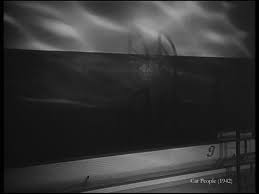
Recently, I watched Alfred Hitchcock’s film The Birds, for the first time in many years. The film, based on the short story by Daphne du Maurier, tells the tale of a lady who goes to a seaside town to deliver two birds as part of a vindictive prank, the kind the idle wealthy spend their time doing. The irony of the film is that these two birds in a cage soon watch humans experience what they themselves experience as birds in general decide, for whatever reason, to attack humans and kill them. Their reasons are never explained, nor is the issue resolved with the film ending with the protagonists fleeing back to the city. Nature has won.
Whilst watching the film, I started thinking about the nature of horror films. What is it in a horror film that makes us so uneasy? The biggest fear that many have is fear of the unknown. What the film does is trigger this unease. Without showing any ‘monsters’ the film makes people anxious. How? By having a group of people barricaded in a room and having the sound of birds without the room. The inference is clear- they are not safe- what they fear is waiting for them, trying to get to them.
The use of sound in horror films is very interesting. The unsettling score and use of ‘oldie’ music in Stanley Kubrick’s adaptation of Stephen King’s The Shining, makes the hotel itself into a character in the film. Whilst it does not become as personified as the hotel does in the book- the notion that humans are far more scary than ghosts- the hotel gives the suggestion that it has engulfed them and that they are slowly decomposing in its stomach. No actual danger is seen, but the suggestion of it creates it. Another good example of unactualized danger is in the 1942 Jacques Tourneur film Cat People, where, similar to The Birds, nature strikes back. The most unsettling moment in the film features an indoor swimming pool. Having just seen a cat, the protagonist takes a swim in the dimly lit pool. Through use of ambient noise (the water) and the reflection of the water on the walls, one almost swears that one can see the silhouette of a cat. There isn’t any cat in the room that we know of, however, the use of light and shadow manages to almost convince us, as with the protagonist, that there is a cat stalking her and that she is in real danger.
Studies have show that sound is the biggest cause of fear in humans, most notably, unexplained sounds. When one hears a sound one is unfamiliar with then one is gripped by uncertainty. What is that sound? What caused it? What will happen next? The film director John Carpenter is dismissive of the film Cat People, saying that light and sound aren’t scary. For him, what is scary is the actual monsters, as seen in his films, such as The Thing where the fear has a tangible basis- the big monster coming after you. However, for me, the suggestion of danger is more fearsome than a big monster. If you see a monster, you can run away from it and hide. If you cannot see the monster, or even know if there is a monster, how can you hide? Every shadow, every noise, could be the monster coming to kill you…or the heating pipes knocking. One of the most effective horror films of the modern age is Ridley Scott’s 1979 film Alien. Alien combines the two elements of Tourneur and Carpenter. There is a danger that for the most part is undefined, the crew of the spaceship have to try to find it, at times following the trial of its acidic blood which threatens to eat through the hull of their ship, yet, in brief moments when one actually sees the alien, it is frightening, often flickering in the shadows and then gone similar to the T-Rex in Jurassic Park, in which the technology meant that it could only be shot in a certain vague way, but which makes it more real and terrifying than any of the computer generated images (CGI) Jurassic Park franchise films that followed it.
Wait…sorry…I think I heard something behind m….
‘till next time

